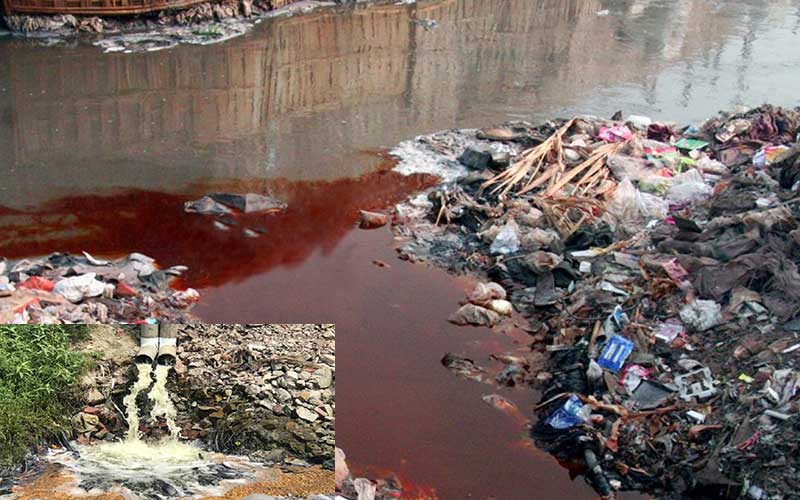Dependable Liquid Waste Disposal Melbourne: Safe and Effective Services
Dependable Liquid Waste Disposal Melbourne: Safe and Effective Services
Blog Article
How Fluid Waste Disposal Works: A Detailed Review of Methods and Technologies Utilized
Review of Fluid Waste Types
The complexity of fluid waste types demands a complete understanding of their features and ramifications for disposal. Fluid waste can generally be categorized right into a number of kinds, consisting of commercial, local, farming, and contaminated materials. Each classification shows unique buildings, calling for particular administration approaches to reduce environmental and health threats.
Industrial fluid waste originates from manufacturing processes and typically consists of a range of contaminants, such as heavy steels, solvents, and organic substances. Metropolitan fluid waste, mostly comprising wastewater from families and business establishments, includes natural matter, nutrients, and microorganisms (industrial wastewater treatment). Agricultural fluid waste, including overflow from farms, might contain fertilizers, chemicals, and pet waste, positioning risks to water top quality and ecosystems
Unsafe fluid waste is defined by its toxicity, reactivity, or possible to cause harm. Understanding these varied liquid waste kinds is crucial for creating reliable disposal techniques and making sure compliance with ecological guidelines.
Physical Therapy Approaches

Testing is the first action, where larger bits and particles are eliminated from the fluid waste making use of displays or grates. In sedimentation containers, much heavier particles work out at the bottom, forming a sludge layer, while the clarified fluid can be further dealt with.
Purification is one more necessary approach that involves passing the fluid with porous products, such as sand or membranes, to record smaller bits. This action improves the quality of the fluid, making it ideal for subsequent treatment procedures.

Chemical Treatment Methods
Chemical therapy methods are important for efficiently taking care of liquid waste, particularly in addressing liquified and colloidal contaminants that physical approaches might not sufficiently eliminate. These strategies utilize numerous chemical representatives to reduce the effects of, precipitate, or transform hazardous compounds into less damaging forms.
One common technique is coagulation and flocculation, where chemicals such as alum or ferric chloride are added to promote the gathering of put on hold particles. This process boosts sedimentation, enabling for simpler removal of the resulting sludge. Additionally, oxidation procedures, using representatives like chlorine or ozone, are employed to break down complicated organic substances and microorganisms, providing the waste safer for discharge or more therapy.
Neutralization is another critical strategy, which readjusts the pH of acidic or alkaline waste streams to neutral degrees, avoiding possible harm to downstream systems and the environment. Furthermore, progressed oxidation procedures (AOPs) utilize combinations of oxidants and ultraviolet light to weaken relentless contaminants, achieving a higher degree of therapy performance.
Biological Treatment Procedures
Organic therapy procedures play a crucial function in the administration of liquid waste by utilizing microbes to disintegrate organic issue and lower impurity degrees. These processes can be generally classified into anaerobic and aerobic treatments, each employing certain microbial areas to attain reliable waste degradation.
Aerobic therapy involves making use of oxygen to assist in the breakdown of natural products by microorganisms. This process is typically applied in activated sludge systems, where aeration containers offer a favorable atmosphere for microbial growth, resulting in the oxidation of organic pollutants. The resultant biomass can be separated from treated effluent through sedimentation.
In contrast, anaerobic treatment occurs in the lack of oxygen, depending on various germs to break down natural matter. This approach is especially useful for high-strength waste, as it creates biogas, a renewable resource resource, while reducing sludge production. Technologies such as anaerobic digesters are regularly employed in commercial and metropolitan applications.
Both anaerobic and cardio organic therapies not just decrease the environmental impact of liquid waste however additionally help with resource recovery, making them crucial components of lasting waste monitoring hop over to here strategies. Their effectiveness, flexibility, and Visit Website effectiveness support their widespread implementation throughout different markets.
Arising Technologies in Disposal
Innovative strategies to fluid waste disposal are quickly progressing, driven by improvements in technology and a raising emphasis on sustainability. Amongst these arising innovations, membrane layer bioreactors (MBRs) have acquired grip for their capacity to incorporate organic treatment with membrane layer filtration, leading to premium effluent that can be recycled in various applications. MBRs enable smaller footprints and extra reliable procedures compared to standard systems.
Another appealing development is making use of anaerobic digestion combined with nutrient recuperation technologies, which not only deals with fluid waste but likewise creates biogas and recuperates beneficial nutrients like nitrogen and phosphorus. This dual advantage enhances source effectiveness and decreases ecological impact.
In addition, advanced oxidation processes (AOPs) are being taken on for the deterioration of complex organic contaminants. These approaches use effective oxidants and catalysts to break down pollutants at the molecular level, providing a very effective solution for challenging waste streams.
Moreover, the combination of man-made intelligence and artificial intelligence in waste management systems is optimizing functional efficiency and predictive maintenance, causing minimized costs and boosted environmental conformity. These technologies show a substantial change towards more effective and lasting fluid garbage disposal practices.
Verdict
In verdict, effective fluid waste disposal requires a thorough understanding of various strategies and modern technologies. By continually progressing these methods, it comes to be feasible to address the growing challenges linked with liquid waste, inevitably contributing to environmental security and resource recuperation.
Liquid waste disposal is a crucial element of environmental administration, requiring an extensive understanding of different methods and technologies customized to various waste kinds. Fluid waste can generally be categorized right into several kinds, consisting of commercial, community, my website farming, and hazardous waste. Agricultural liquid waste, including overflow from farms, might contain plant foods, chemicals, and pet waste, presenting risks to water high quality and communities.
Numerous physical treatment techniques play a vital duty in taking care of liquid waste properly - industrial wastewater treatment.In conclusion, effective liquid waste disposal demands an extensive understanding of various strategies and modern technologies
Report this page